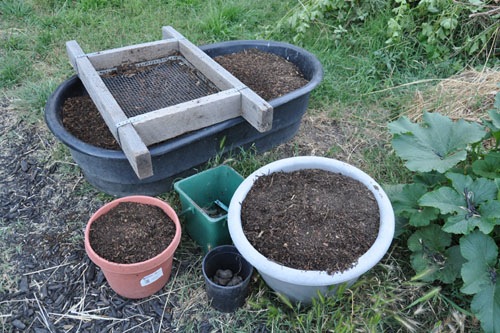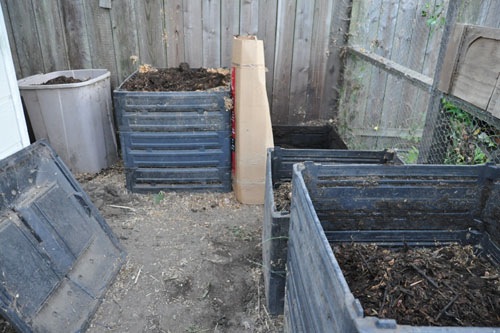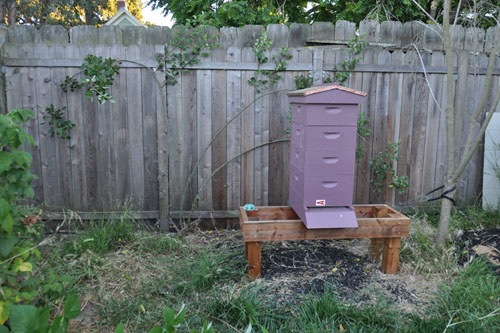My Compost Empire
This weekend I started a big project I've been meaning to get to for a while. That is going through the chicken yard with a shovel and bucket and turning and sifting every bit of compost in there.
Not only are there piles in the chicken yard that are as old as the yard itself, but the soil level back there has built up by several inches and is above the bottom of the shed siding and the bottom of the back fence. So over the next several weeks, as I start building the beds under the deck out for planting, I'm going to go through and turn over each pile back there, sift it, and put back the large chunks. I'm also going to dig down and sift the soil as well, because that built up soil is very fertile (it's full of chicken poop, for one thing), and I need to get it out of there.

On Sunday I sifted most of the compost from one very tall bin. It was five Biostack layers tall (the black bins we have are Biostacks; the local trash company sells them at a discount and I have accumulated a number of them from neighbors who try and give up on composting; I can always use more). I ran out of containers to store the sifted compost in, so I had to stop, but as soon as I figure out a storage solution of some sort I can get right back to work on digging out and sifting.
(I also have piles of random rocks and pieces of trash sifted out from the compost, which is why I don't just dig it out and pile it in the garden without sifting first.)

The stack I worked through was in the right corner there; I took the layers and built a couple more stacks to the side with new compost in them. They look pretty nice, don't they? That's a layer of mostly decomposed chicken litter from the chicken room. Mixing that in with garden waste makes it burn down nice and fast into a very fertile soil.
My other secret is to take the nearly-finished compost from our compost tumbler and put it in the bins to finish off; it tends to be a wetter, greener mix of stuff, so it really kick starts a pile of dried grass and weeds. And the time in the tumbler helps break down anything that would attract pests.

To get things going, I weeded out behind Hive A, where grass was growing tall. I also pruned the rose back there and tied it back onto the fence. That one is a killer when I am working the hive, as it wants to get caught in my veil all the time. I took everything I cleared out and used it to get a couple more compost bins started. I still have a substantial compost pile left from when the gardeners did their big cleanup, and I want to move that in with the chickens as well, when I get enough old stuff sifted and moved out.
(You may also notice I added a honey super to Hive A. They have been going gangbusters and a nectar flow is on right now, so I gave them more room.)
I'm going to be buying some compost bins this summer, as well, for a couple of reasons. First, because the chickens are real forces of nature in the compost, and I need some more enclosed bins to keep them from just kicking everything around. Second, because I'm phasing out the pallet compost bins that mainly act as chicken launching stations, and I need to maintain my current compost capacity to handle the volume of waste from the garden.
When I finish this project I will get a few bales of straw from the feed store and spread them out on the ground in the chicken run. That will give the girls something to dig in and help keep the dust down without keeping them from taking dust baths. Straw breaks down pretty quickly and doesn't seem to add too much volume (you can hardly tell where we mulched with straw a couple years ago, and that was a layer at least eight inches thick). I bet I can mulch with straw annually and hardly see any buildup at all over a five-year period. Once it does build up it will be into compost that is a mix of straw and chicken poops, which is about as good as it gets for fertilizing.posted by ayse on 06/25/12